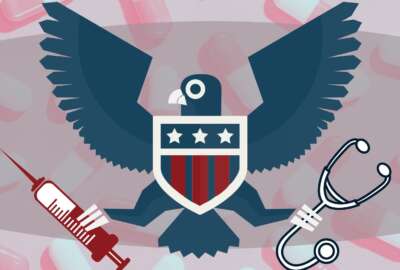
OPM expects busy Open Season standing up USPS health insurance marketplace in 2024
The Office of Personnel Management expects to receive a much higher volume of calls during next year’s Open Season. That’s because a Postal Service reform...
The Office of Personnel Management expects to receive a much higher volume of calls during next year’s Open Season.
That’s because a Postal Service reform bill signed into law in 2022 is moving postal employees and retirees into a different health insurance marketplace from the rest of the federal workforce, starting in January 2025.
OPM Director Kiran Ahuja told members of the House Oversight and Accountability Committee earlier this month that the agency is on track to create a standalone Postal Service Health Benefits Program.
“It’s a huge effort, it’s an aggressive timeline. We have to enroll a little less than 2 million individuals when we have this stood up,” Ahuja told the committee in a March 9 hearing.
OPM also faces a tight timeline to create the online infrastructure for postal employees and retirees ahead of an open enrollment period in late 2024.
The Postal Service Reform Act, signed into law in April 2022, gave OPM $70.5 million in no-year funds to get started launching the new health insurance marketplace.
But the agency expects it will have spent down those funds by fiscal 2024, and will need additional funds from Congress to keep up with implementation costs.
“Fiscal year 2024 is a pivotal year in establishing this program,” OPM wrote in its 2024 budget justification to Congress.
OPM expects it will need additional funding in fiscal 2024 to approve PSHBP plans, negotiate rates and help all 1.7 million USPS employees, annuitants and their eligible family members successfully enroll in new health insurance plans.
That’s a much higher level of customer support for OPM to provide. It normally sees about 5-6% of Federal Employees Health Benefits (FEHB) enrollees make a change in enrollment in any given year.
For context, postal employees, annuitants and their eligible family members make up about 20% of the more than 8 million individuals that currently get their health insurance through the Federal Employees Health Benefits Program (FEHBP).
“We’re meeting our performance metrics on this particular, pretty sizable effort within our agency,” Ahuja said.
OPM, in its fiscal 2024 budget request, is asking Congress for $37.7 million in additional funds to create the PSHBP.
About $28 million of requested funds would support maintenance and operations costs for work that began on the project this year.
Some of those expenses include personnel, outreach and communications, cybersecurity and OPM system maintenance costs.
“OPM will be contracting with approved health insurance carriers, deploying core back-end technical systems and data linkages, standing up front-end user interfaces and customer service infrastructure, and working with USPS and other partners to inform and educate postal employees and annuitants about the program they are joining,” OPM wrote in its budget justification.
OPM is also calling for $9.5 million to handle an expected “surge in demand for customer support.”
“OPM anticipates a significant spike in demand for customer-facing services this first year and building the capability needed to deliver a good customer experience at scale, and at the outset, is essential to the effective implementation of the PSHBP,” OPM wrote in its budget justification.
OPM would use those funds to create a Customer Support Center (CSC) that would help enroll postal employees and annuitants in new PSHBP health plans and answer their questions.
“Change is often difficult, and we expect many postal employees and annuitants will need extra advice and assistance to understand their choices and actions that must be taken,” OPM wrote in its budget request.
OPM is looking to staff up the Customer Support Center to process enrollment changes made over the phone or through the mail, verify documentation that proves the eligibility of family members and enrollees, answer questions from postal enrollees and address enrollment and premium discrepancies.
OPM said its Customer Support Center would deliver on the Biden administration’s priority to improve the level of customer experience across all government-provided services.
The Customer Support Center will also include a call center that will provide year-round support in multiple languages and provide assistance over the phone, through email and through live chat in the U.S. and internationally.
The postal-only health insurance marketplace comes with its own unique specifications that don’t apply to federal employees under the FEHBP.
The Postal Service Reform Act requires all future postal retirees to enroll in Medicare Part B, in an effort to save USPS tens of billions of dollars over the coming years.
The legislation directs OPM to run the PSHBP in a similar fashion to the FEHBP. But the requirement for nearly all future postal retirees to enroll in Medicare necessitates that OPM builds certain unique features into the PSHB system that aren’t built into the infrastructure for FEHBP.
But Ahuja said the PSHBP will also serve as a “test case” for what OPM can do to modernize the FEHBP.
Ahuja said each agency manages the FEHBP enrollment of their employees and has done so for more than 60 years.
The Government Accountability Office recently reported that OPM under this system does not have a clear way to identify and remove enrollees’ FEHBP family members who are ineligible.
The Government Accountability Office (GAO) said the FEHBP program may be spending nearly a billion dollars annually on ineligible members.
“While we have issued guidance and communication to agencies to manage eligibility, it is a challenge from our end, because it’s decentralized,” Ahuja said. “The Postal Service Health Benefits [Program] is actually going to centralize that enrollment, and we see it as a test case for what we would like to actually incorporate with FEHB to manage improper payments.”
Beyond centralized enrollment, Ahuja said the PSHB program will have eligibility and decision-support tools that would also benefit the FEHBP.
“These are all the things that we would then like to take back and make those improvements, with the support of Congress,” Ahuja said.
OPM recently released a request for proposals for the IT infrastructure to manage PSHB enrollment and eligibility. Ahuja said the agency will release an interim final rule in April on how the agency will oversee the entire program.
OPM said in its budget justification that its regulations were developed in collaboration with the Social Security Administration, the Centers for Medicare and Medicaid Services, the Indian Health Service, the Department of Veteran Affairs and USPS.
Copyright © 2025 Federal News Network. All rights reserved. This website is not intended for users located within the European Economic Area.
Jory Heckman is a reporter at Federal News Network covering U.S. Postal Service, IRS, big data and technology issues.
Follow @jheckmanWFED
Related Stories





